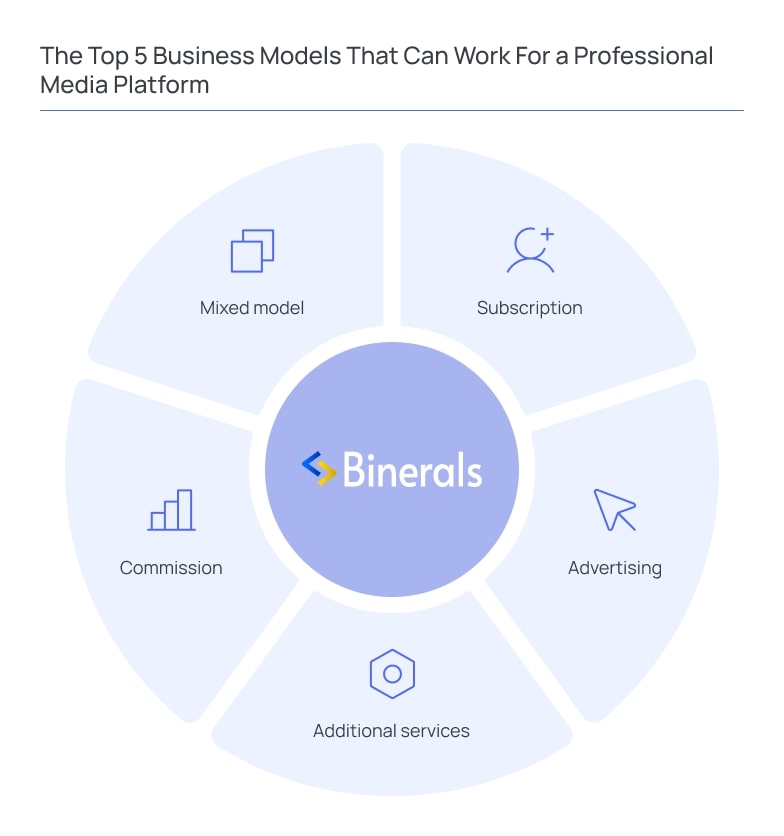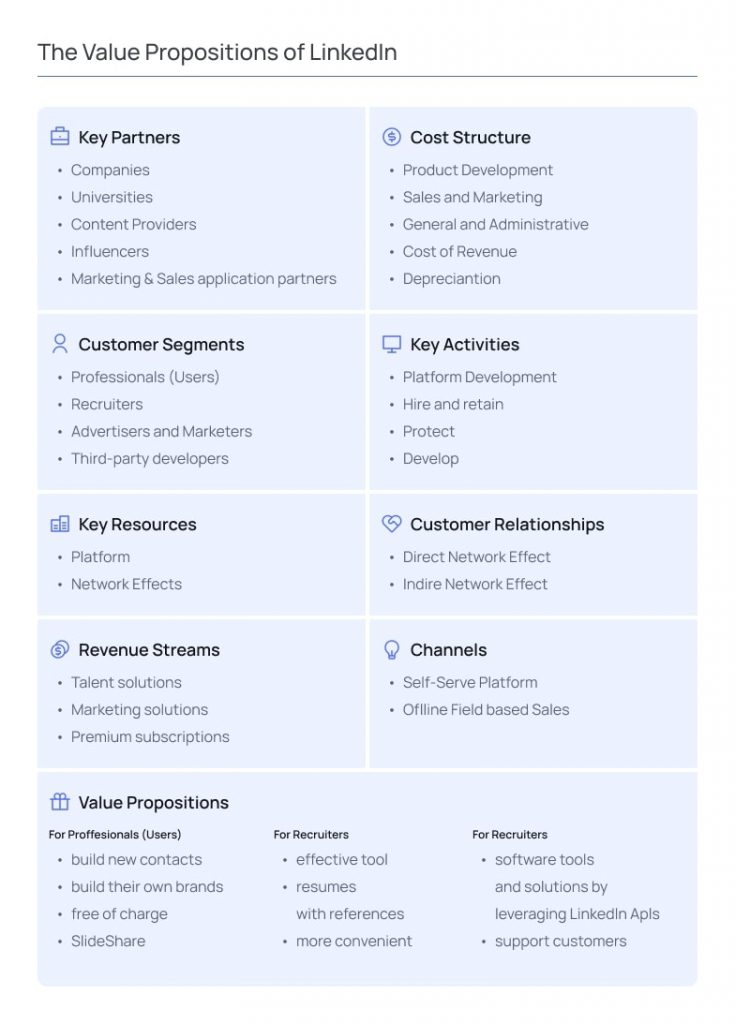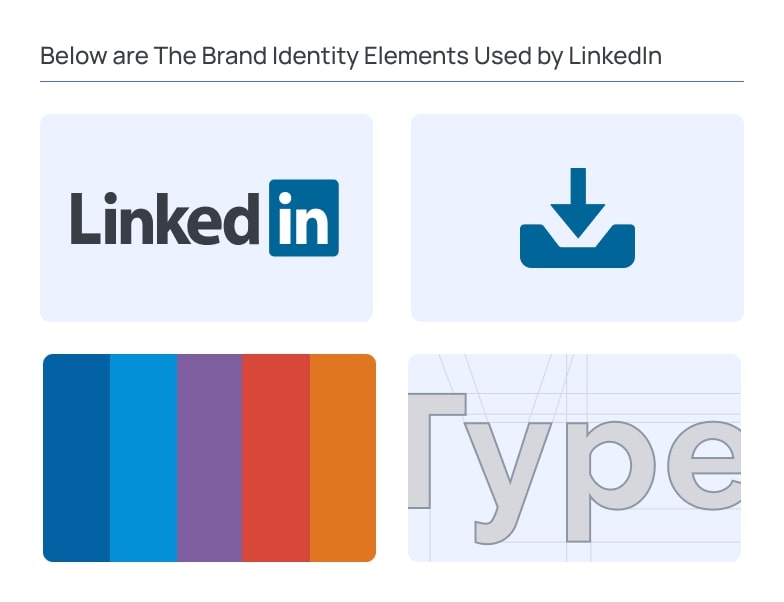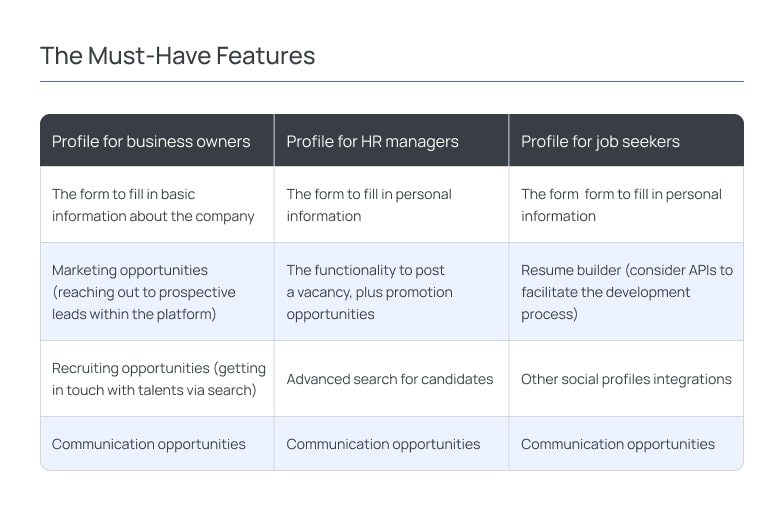While the global economy is suppressed by pandemic and its consequences, more and more businesses are looking for professional networking opportunities. They are in need of new channels to reach out to their target audiences and attract top talents to help them cope with modern challenges.
A professional social media can be a solution to those problems, and when created right, it can be quite a valuable and profitable venture. While LinkedIn is now leading on this market, let’s find out how to create a tech product inspired by the best practices utilized by this professional social media.
Professional Networking Websites - Possible Business Models

While money is rarely the first and the only goal for startup creation, the way you monetize your future business social media platform still matters. If you want to create professional business sites like LinkedIn, there are several business models you may choose from.
Subscription Model
This is one of the most popular ways to monetize web and mobile applications. Within such a model, the user should pay a fixed price to access all the features of the platform. Such a model also requires a free demo version to allow the users to test what they are going to pay for.
Also, there is a need for very clear business value and the right marketing strategy to communicate with prospective users and persuade them to switch to the paid version of the app.
As for the benefits of this model, there is an opportunity to come up with flexible and personalized tariff plans for different groups of users and predict your income more accurately.
Advertising
Honestly speaking, most users are already tired from the advertising that is impossible to skip for several seconds, so advertising business model can hardly be considered the best option. As a rule, this monetization strategy is used by entertainment apps that come for free and have a large number of interested users.
However, there is still a way to match a professional social media with this business model as well but you need to be smart with the ads placed in your app. For example, you may partner with specific ad publishers whose offerings are likely to fit your target users’ interests. In this case, all the features should come for free or there should be an opportunity to block the ads by paying for a subscription.
Additional Services
If you have the expertise in the specific niche your future users are interested in, you may sell them additional services. The simplest example is recruiting, marketing, or accounting services since in the case of business networks, the lion share of the audience will need such help.
Commission Model
Despite this model seems to be mismatched with social media specifics, there is still a way to drive profit with its help. For example, you may think of your future app as some kind of marketplace that allows people to meet each other depending on their business needs. This is how UpWork makes money, and in this case, you will be getting a fee after each transaction, contract, or agreement signed with the help of your platform.
Mixed Model
The mixed business model allows for combining the best features of the monetization strategies above. And this is just the model Linkedin uses.

It offers a Freemium subscription that opens up access to the top features, the set of which is perfectly tailored to the needs of recruiters, business owners, and job seekers.
Also, the company offers talent and marketing solutions with the help of which the companies may reach out to prospective candidates and promote their businesses to the target audience.
How to Build a Website Like LinkedIn in 8 Steps
How to make a site like LinkedIn? Below we are going to suggest a practice-proven strategy that will help you to successfully create a website like Linkedin and scale it, continuously delivering value to your users.
1. Get Clear With Your Target Audience
Firstly, let’s analyze the target audience of LinkedIn. They are ordinary users or job seekers and various professionals from different fields, business owners who either promote their goods or services (in B2B niche, as a rule), recruiters looking for top talents globally, and universities. LinkedIn is one of the examples of winning target audience diversification since most of the solutions created are targeted at specific user groups.
Next, it’s your turn to define your target audience. Who are they? How many target audience groups do you want to cover or maybe you want to make your solution as specific as possible? Both options have the right to exist, so the first stage in the like-Linkedin website development is to get very clear on your target audience specifics, their needs, and pain points.
Get started with this task by creating an Ideal Customer Profile (ICP). This is a well-researched and structured characteristic of your perfect customers, including their gender, age, lifestyle, education, occupation, plus personal and/or business pain points.
2. Come Up With a Real Value
Creating value is even more challenging than defining your target users. What’s more, the more target groups you have, the more value propositions you have to develop. Let’s get started by analyzing the value propositions of LinkedIn.

They have created three different value propositions for each of the target groups allowing them to solve their problems with the help of the platform and successfully interact with each other.
However, your value proposition is only one of the essential elements of your Business Model Canvas that usually specify your target audience segments, activities, resources, cost structure and monetization approaches. All these elements are directly interconnected with each other, and to clearly define each of them, you need to get started with business analysis. Some of the startup indicators tend to underestimate the importance of this process, however, this is the only way to take one more look on your idea, align it with your current business processes and market environment, creating a relevant value proposition as the result.
Business analysis is also one of the first steps towards creating clear and realistic software requirements specifications. This document is important for making sure that the stakeholders and the development team have reached mutual understanding of the project development strategy, its milestones, timeframes and budget. Reach out to us to get competent help with business analysis and SRS documents that will guide your pitfalls-free project development!
3. Decide On a Business Model
We’ve already covered the possible business models you may choose from. Perhaps, the mixed model seems the most attractive, however, keep in mind that each of your offerings as a part of this model should be backed up by different values.
Most companies move to the mixed model gradually, establishing their influence on the market, building the target audience’s trust, and scaling their solutions so it may make sense to get started with the one model and then, proceed with delivering different values to different target groups.
4. Develop Brand Identity
The next step to successfully create a website as a platform like LinkedIn is developing your brand identity. Your brand identity stands for the colors, logos, and images you use, the voice you speak, and the mission you have. Developing it for your company is essential since your brand identity is just the thing that will allow you to occupy your niche on the market of business social media and connect to your future users on visual and emotional levels.
Below are the brand identity elements used by LinkedIn.

Mainly, they use blue and white colors which are also the colors of trust and credibility, an easily recognizable logo with an emphasis on “IN” and a professional but still friendly voice.
To create your brand identity, get back to your values and mission, and try to tailor them to the expectations of your target users using visual means.
5. Think Through the Must-Have Features
Depending on your target user groups and your future solution specifics, you will have to develop different sets of features. For example, if your users are business representatives, HR managers, and job seekers, you need to create a profile for each but embed different functionality.

6. Create the First Prototype and Test It
After you are done with your brand identity and the list of must-have features, the next step to build a website like LinkedIn is to create the first prototype of your future solution. At this stage, you have to find a way to embed your functionality into your design and UI, plus make sure that it is convenient for the audience to use.
That’s why, after your prototype is created, it should be tested by your users’ representatives with the help of heat mapping, for example. Such an approach is one of the best practices of LEAN development that allows for avoiding essential mistakes at early stages, plus it will help you improve your user journey.
Create MVP for your amazing idea with our professionals
Contact us7. Transform Your Prototype Into an MVP and Test It Once Again
The next stage of creating a like-LinkedIn solution is creating a Minimum Viable Product. This is a kind of demo version of your future solution that will come with the set of essential features only. At this step, you should provide your users with the features that are enough to successfully interact with your app, and then, you should test the ways they do it.
Creating an MVP is a great opportunity to collect users’ feedback at a low cost and take the obtained insights into account when transforming your solution into a full-fledged social media platform for business.
8. Launch, Support, Maintain and Scale Your Solution
At this stage, you are almost done with your professional network. After you have considered and implemented all the wishes of your potential users, you may launch your solution, get started with its marketing, maintenance, support, and scaling.
As well as at the stage of MVP development, listening to your users is still essential. After some time of interacting with your website, they will be able to provide you with even more useful suggestions on what they would like to have.
Also, consider expanding the influence of your solution by entering foreign markets. In this case, don’t forget to study the foreign audience’s specifics in advance and localize your product to meet their expectations.
Technology Stack for Creating Business Site Like LinkedIn
What technologies to choose to build professional networking sites like LinkedIn? As for LinkedIn itself, it is mainly built with Java, plus Javascript and Scala. Java and JavaScript are almost always good picks for web development, however, the final choice will largely depend on the specifics of the features you would like to create and the technical expertise of your development vendor. For example, we at Binerals, use React and Relay for frontend development, plus Node.js and GraphQL for backend creation.
As for a simplified way to develop a website like LinkedIn, there is an opportunity to create it even with WordPress and power it with additional plugins like resume builders, search engines, and data collection tools. This is quite an affordable tactic, however, if you bet on the enterprise-level solution that will be able to drive profit, it would be more reasonable to partner with an experienced development company and discuss the choice of technologies with them.
You may also compare pros and cons of out-the-box development, using WordPress and custom software creation approaches in our guide. Despite the fact that the first two strategies seem most affordable and easier to follow, only custom software development allows for accurately meeting customer needs, and creating a truly competitive solution.
What’s more, hiring an experienced tech vendor with a ready-made team is a great opportunity to take advantage from their knowledge and expertise, saving a lot of time and money on the hiring and onboarding process, plus establishing communication and collaboration. Creating a professional social media is quite a challenging task, considering the competitive market and tech talents shortage. To cope with this challenge, you need a tech-savvy team of researchers, front and backend developers, designers and testers. We have them on-board, and welcome you to benefit from their skills and knowledge in the process of your professional social media website development.
Talk to Our Tech Team
Schedule a MeetingHow Much Can It Cost to Build a Site Like Linkedin.com
The cost to build a website like LinkedIn will largely depend on the tech stack of your choice, the complexity of your design, and the set of features you need to create. Below is an approximate cost breakdown for creating an MVP for a LinkedIn-like website.
As for the price to create a website like LinkedIn, it will cost from $50,000 to $80,000. Also, keep in mind that this is the price for creating an MVP. The cost for final product development will depend on the results of MVP testing and the specifics of the features necessary to turn it into a full-fledged product that will meet your users’ expectations. We also kindly suggest paying attention to the development teams with transparent pricing, that is, those who may clearly explain the cost breakdown and draw a line between the price to create an MVP and the cost to develop an ultimate solution.
What’s more, your full-fledged application will also need competent content management in order to avoid claims and legal issues as the result of GDPR, AppStore and/or PlayMarket rules violation. Keep this necessity in mind as one more point that should be estimated.
However, there is one more factor to take into account, and this is the location of your development vendor. Since different countries have different levels of economic development, the price for the same services can vary significantly. That’s why a lot of American and Western European projects are successfully outsourced to Eastern Europe, in particular to Ukraine.
This is one of the top global IT outsourcing destinations that perfectly combines high-end development services and quite a reasonable price. On average, the hourly rate of Ukrainian developers is $50 (for comparison, it is $150 in the US) and such a salary difference allows for creating top-notch tech projects at comparatively low cost. Find out more about the benefits of outsourcing software development to Ukraine in our dedicated article.
Conclusion
Creating a website like LinkedIn is quite a promising idea when a lot of businesses and professionals worldwide are looking for new opportunities. Do it right by employing Binerals expertise. Our practical experience in social media development will help us to deliver ultimate value to your project and prospective customers so let’s get in touch already today to discuss the details and open up new opportunities for your business and other companies!
Launch My Project
Get started